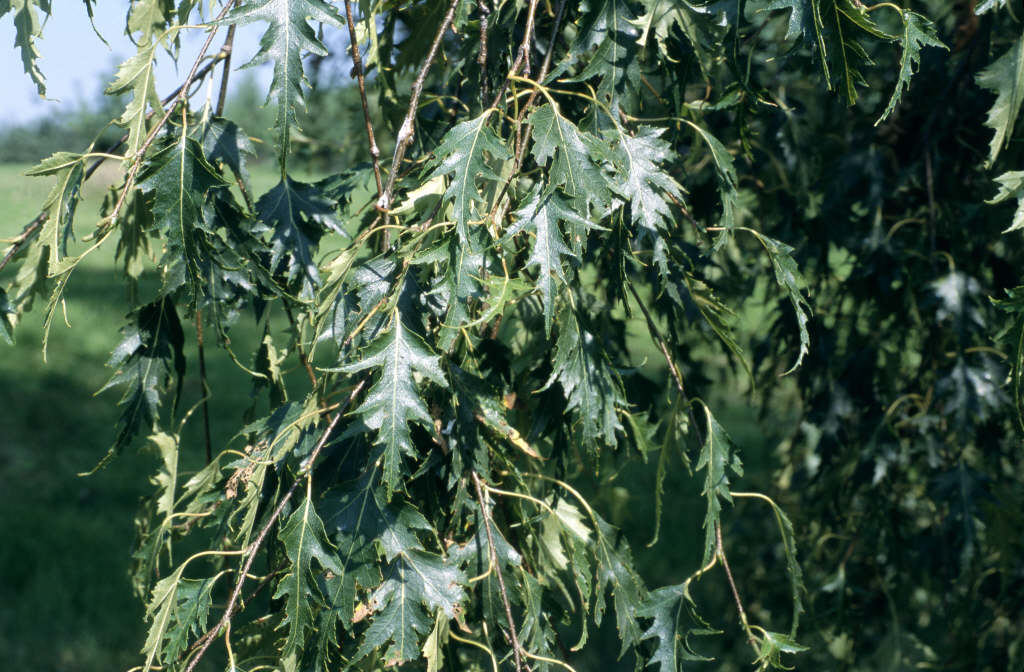Betula pendula subsp. pendula 'Laciniata'
Swedish birch
A slender deciduous tree of open habit. Bark white, becoming black and rugged at base. Leaves oval, attractively deeply incised with narrow lobes; yellow in autumn. Flowers in brown catkins
Synonyms
Betula pendula subsp. pendula 'Dalecarlica' misappliedBetula alba var. laciniata
see moreBetula verrucosa f. laciniata

Buy this plant
Size
Ultimate height
Higher than 12 metresTime to ultimate height
20–50 yearsUltimate spread
Wider than 8 metresGrowing conditions
Moisture
Moist but well–drained, Well–drainedpH
Acid, Alkaline, NeutralColour & scent
| Stem | Flower | Foliage | Fruit | |
| Spring | White | Brown | Green | |
|---|---|---|---|---|
| Summer | White | Green | Brown | |
| Autumn | White | Yellow | ||
| Winter | White |
Position
- Full sun
- Partial shade
Aspect
South–facing or North–facing or West–facing or East–facing
Exposure
Exposed or Sheltered Hardiness
H7Botanical details
- Family
- Betulaceae
- Native to GB / Ireland
- No
- Foliage
- Deciduous
- Habit
- Pendulous weeping
- Genus
Betula can be deciduous trees or shrubs, usually colouring well in autumn and often with striking white, pink, or peeling brown bark; separate male and female catkins open before or with the leaves in spring
- Name status
Accepted
How to grow
Cultivation
Will grow in a wide range of situations
Propagation
Suggested planting locations and garden types
- Architectural
- Cottage and informal garden
- Wildlife gardens
Pruning
Pests
May be susceptible to birch borers, leaf-mining sawflies and aphids
Diseases
May be susceptible to honey fungus, a tree rust and powdery mildews
Get involved
The Royal Horticultural Society is the UK’s leading gardening charity. We aim to enrich everyone’s life through plants, and make the UK a greener and more beautiful place.